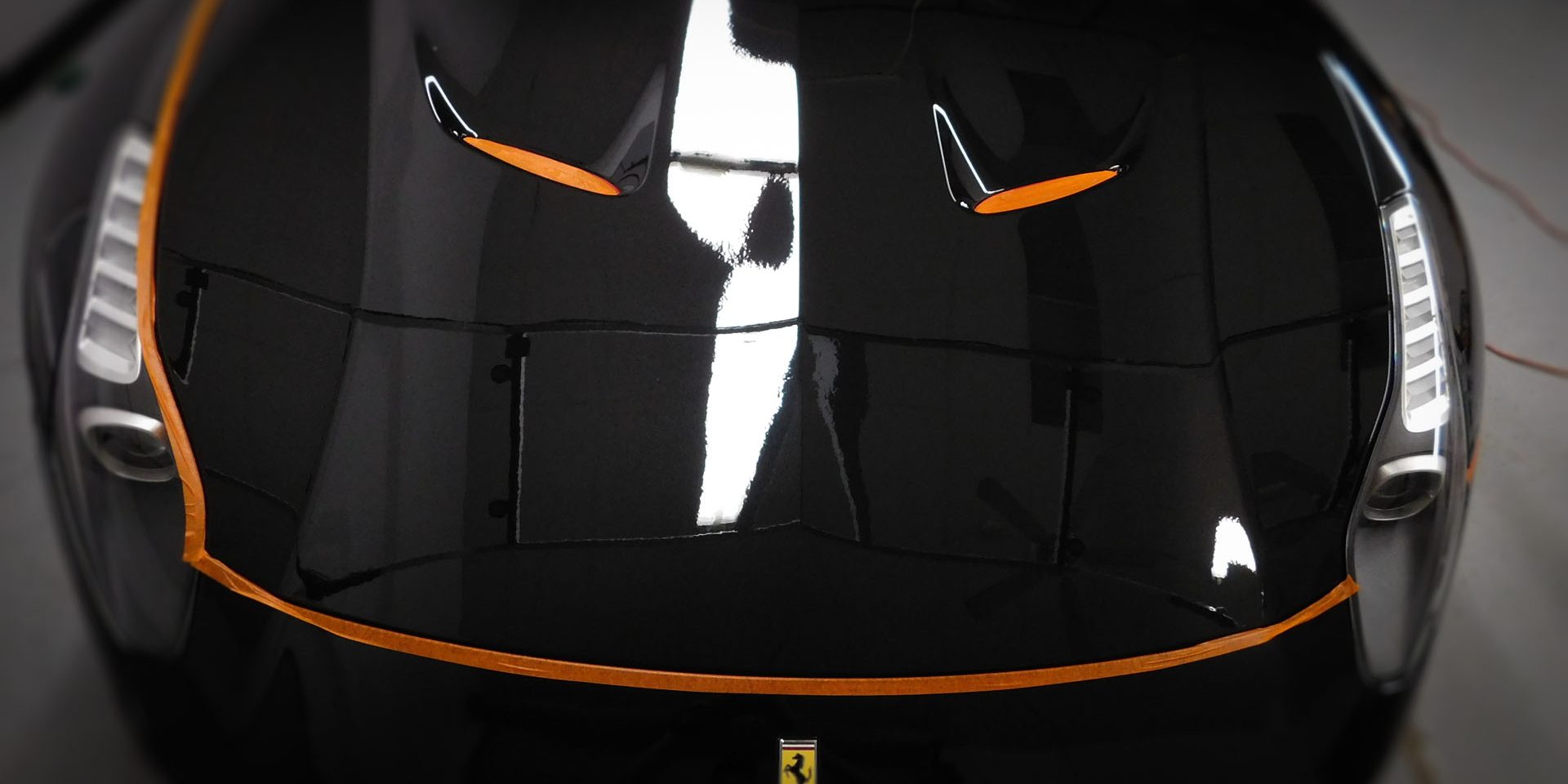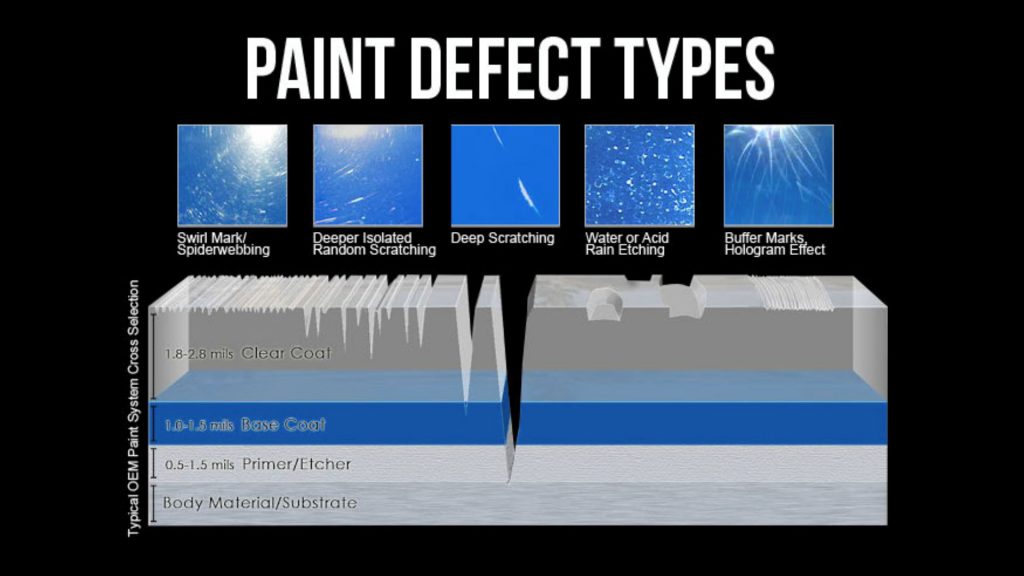Paint correction is a craftmanship of refining the surface, permanently removing as many defects as possible such as swirl marks, scratches, water etching or any defects that are topical and/or sub-topical thru mechanical abrasions via machine polishing, without jeopardizing the clear coat. It takes skills and patience in order to truly complete the highest degree of paint correction, displaying a true “optical clarity” on the surface.
Why consider a paint correction?
Many factors needs to be taken in consideration to determine if any paint correction is needed on a vehicle, given the environmental challenges the surfaces have endured.
- water etching
- bird etching
- swirl marks caused from improper wash methods
- Scratches
- Poor machine polishing
- Oxidation (lack of reflection)
Sadly, a combination of these can leave the car finish looking less than perfect, dull and a surface that refracts light instead of reflecting due to the heavy defects. Not only does this detract from the vehicle appearance, but it ultimately reduces the value.
Paint correction can improve the vehicle appearance by reducing or fully removing the defects and imperfections throughout the vehicle’s surface. By doing so, this process can add an increased in gloss, depth of reflection, clarity and slickness.
Read “Paint Correction: How To Address The Ugly Secret Lurking In Your Brand New Car’s Paint”
by Karl Brauer at Forbes.com


